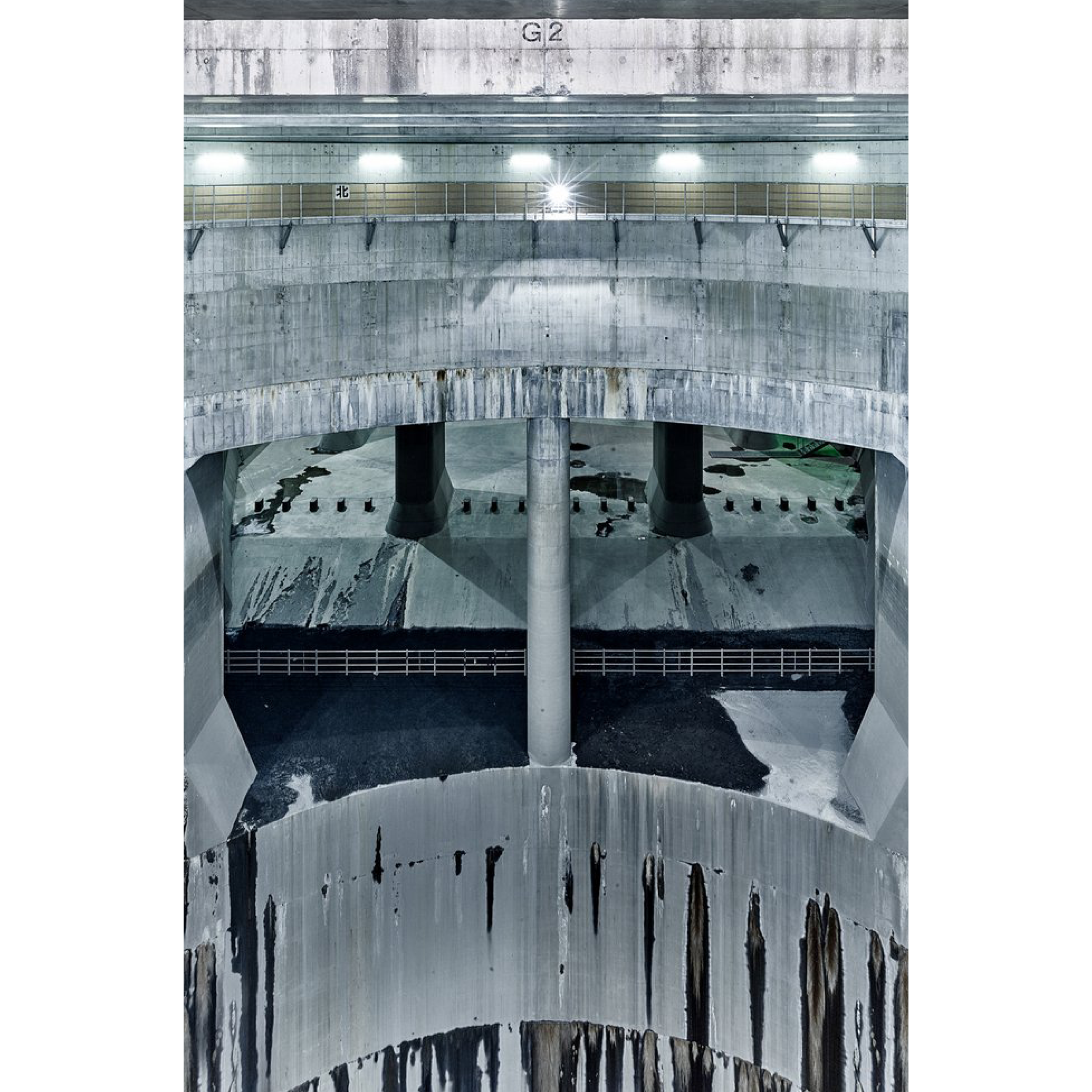
The first hour of rain in big cities is more polluting than fecal water.1 Rainfall drags contamination which ends up into sewers, rivers and seas. To prevent it, storm tanks not only remove polluted solids from the rainfall before it is redirected to the cycle, but they also absorb surplus water to avoid sewerage collapse, river overflow and city flooding. They function as a sewerage infrastructure consisting of a deposit dedicated to capture and retain the rainwater transported by collectors. They come into action when there is very intense rainfall and the drainage capacity of the water is lower than the volume of rain.
Madrid and Tokyo have the largest storm drainage systems in the world. Composed of a grid of oversized pillars cast from tons of reinforced concrete, these underground temples work as latent spaces waiting for the rain to come. While Tokyo’s storm tank is made up of a network of five silos connected by four miles of tunnels and Madrid’s tank is a large rectangular deposit hidden under a golf park, Mexico City has a different system. Contrary to the gigantic underground temples which function under a centralized management, rain water in Mexico City is managed by decentralized citizen initiatives such as “Isla Urbana”. They develop rainwater harvesting projects focused on the high areas to the South of Mexico City, where the largest number of homes don’t have connection to the drinking water.2
The dichotomies between superficial and underground, viewed and hidden, centralized and decentralized are blurred. Independently of their differences, these two systems respect the same cycle, being understood as actants3 with which the city negotiates its survival.
Christoffer-Rudquist. Japan’s Storm Tank
Sources: https://www.wired.com/2017/04/christoffer-rudquist-tokyo-drainage-system/
Sources: https://www.wired.com/2017/04/christoffer-rudquist-tokyo-drainage-system/
- The first hour of rain in big cities, https://www.lasexta.com
-
Isla Urbana, https://islaurbana.org/
-
Bruno Latour, Paris Ville Invisible, 1998
